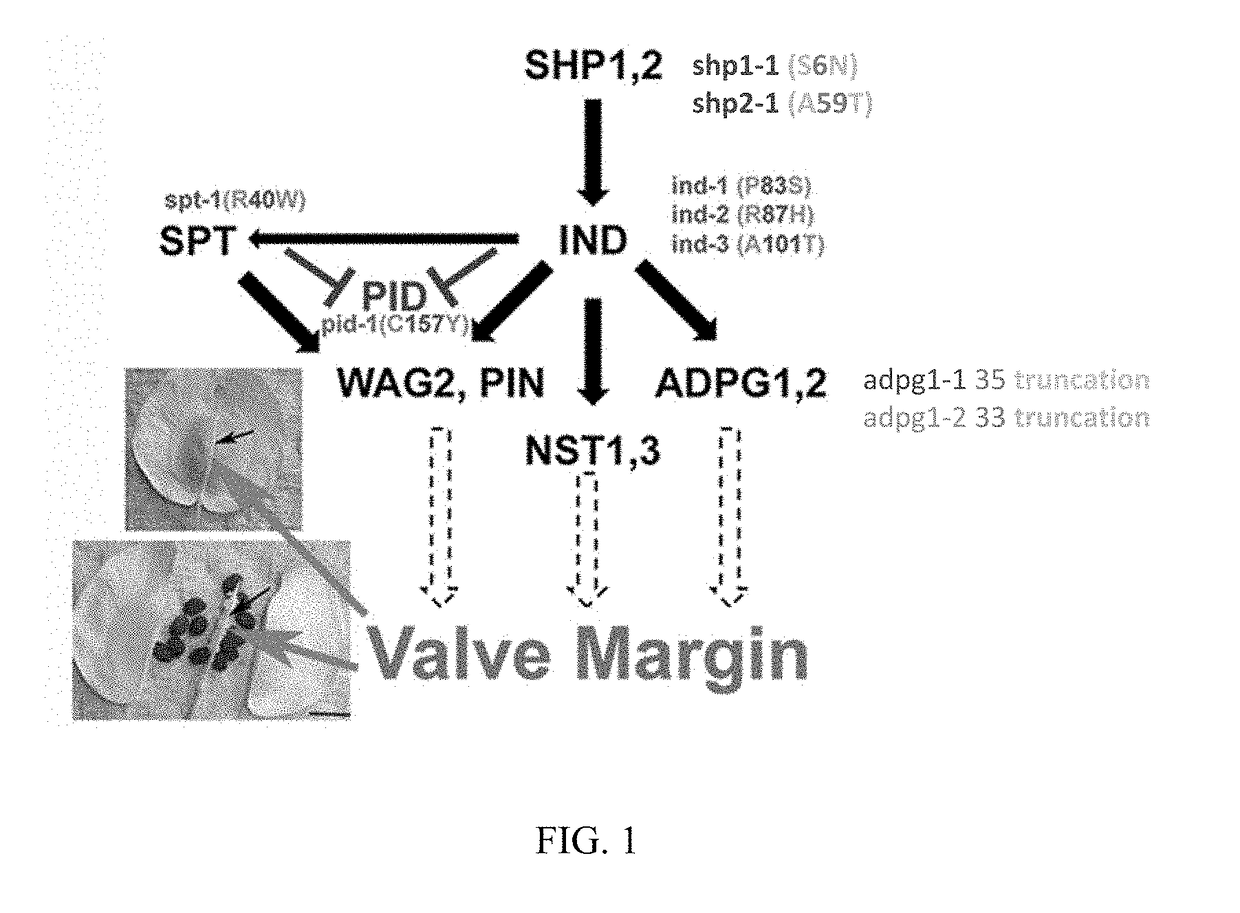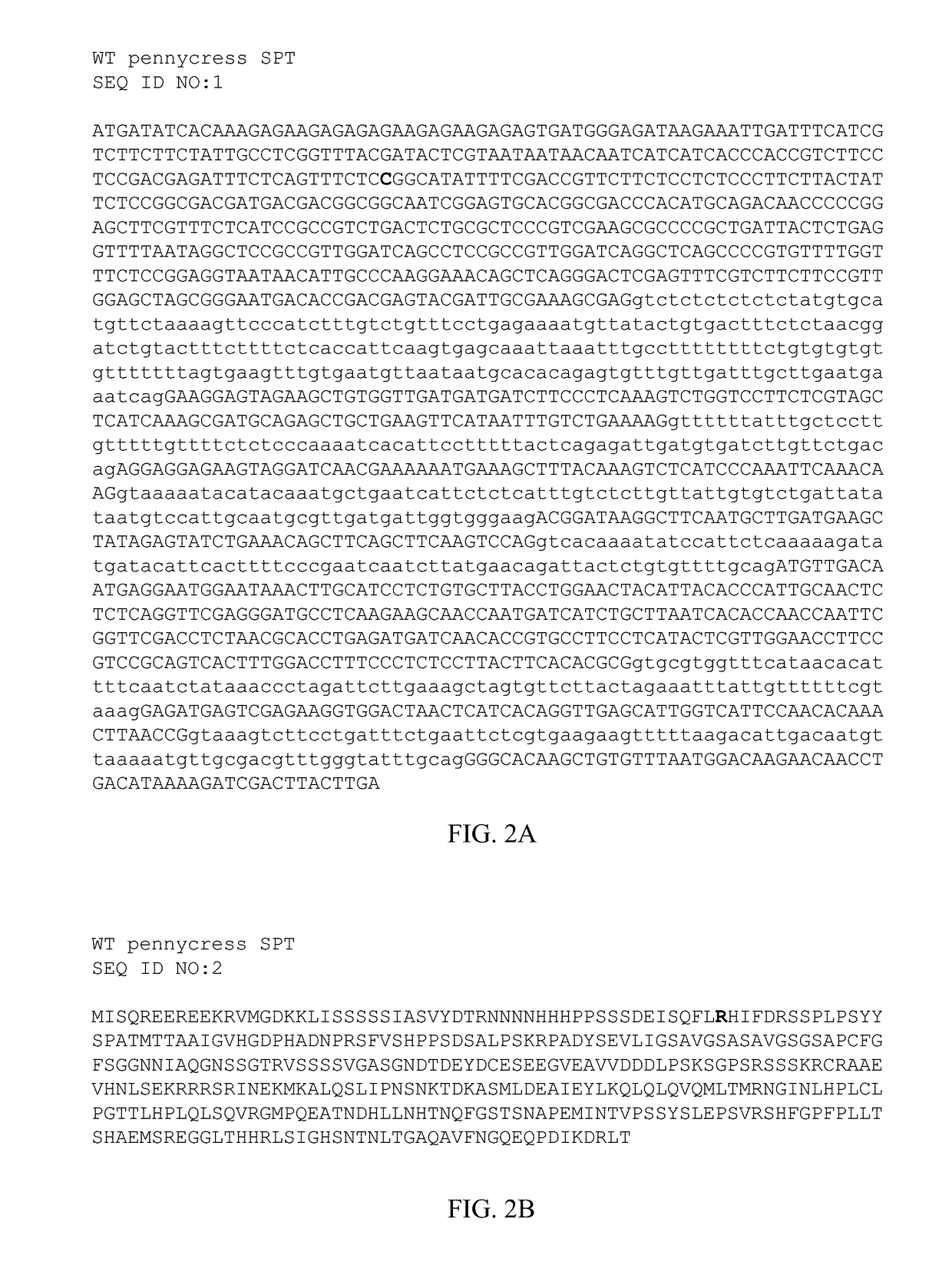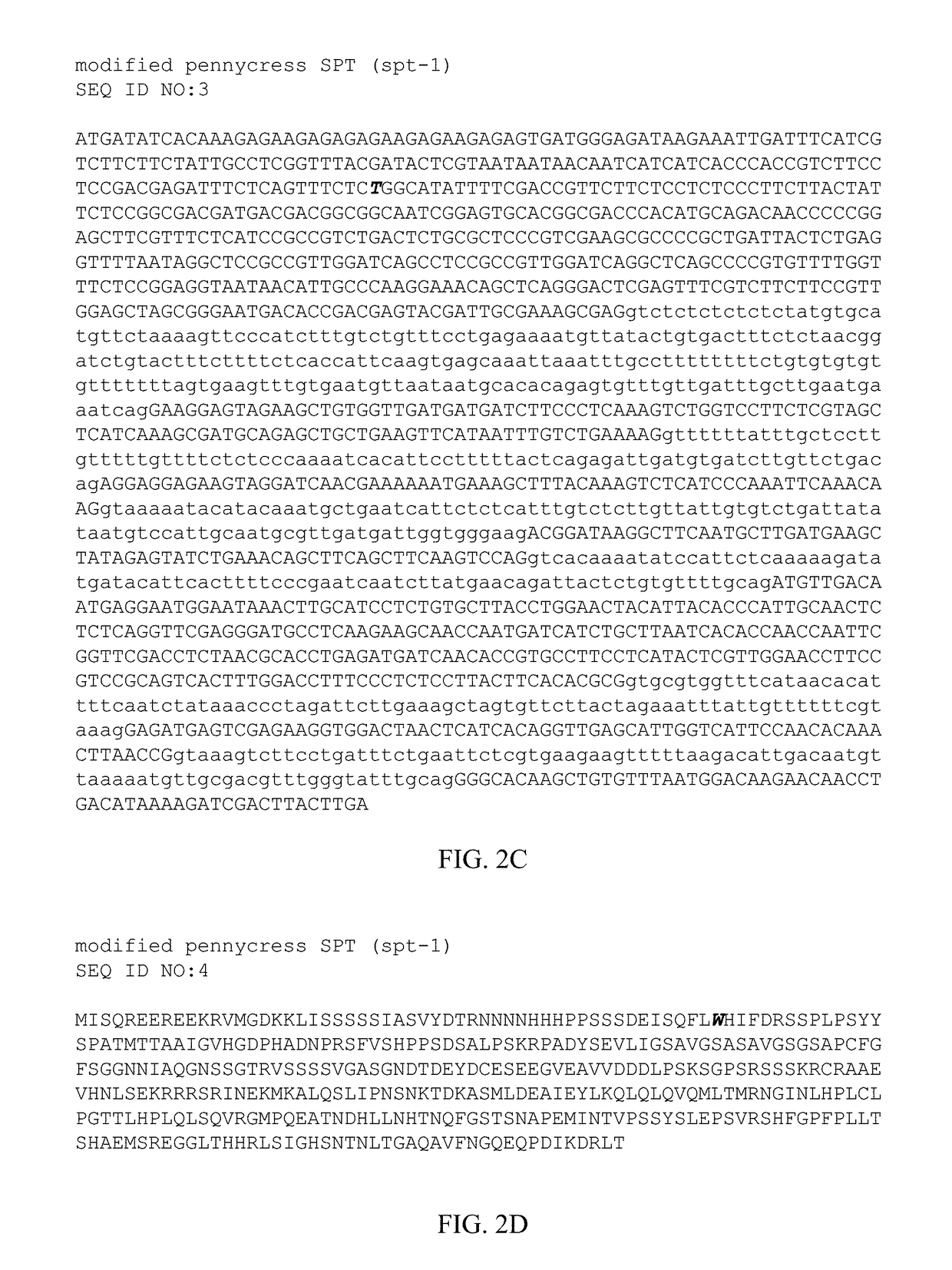Oilseed plants having reduced pod shatter
a technology of oil seed pods and plants, applied in biochemistry apparatus and processes, peptide sources, enzymology, etc., can solve the problems of threatening the sustainability of current farming practices and the health of rural populations, and rye provides no economic return, so as to reduce the shatter of seed pods, increase the yield, and reduce the effect of seedpod shatter
- Summary
- Abstract
- Description
- Claims
- Application Information
AI Technical Summary
Benefits of technology
Problems solved by technology
Method used
Image
Examples
example 1
ted Pennycress Plants
[0069]To identify domestication genes in pennycress plants, pennycress seeds were mutagenized with several different mutagens, including ethyl methanesulfonate (EMS), fast neutrons (FN) and gamma rays (γ rays). Treatment of dry plant seeds with mutagens results in the generation of distinct sets of mutations in every cell in the seed. The fate of many of these cells can be followed when a mutation in one of these cells results in a visible phenotype creating a marked plant sector. For example, mutations that induce the formation of either yellow or pale sectors have been used to generate embryonic cellular fate maps in Arabidopsis. These fate maps make predictions about the contribution of cells in the embryonic meristem to development of subsequent plant structures. The largest of such sectors can be used to estimate the number of cells (known as the genetically effective cells) that give rise to the gametes in the treated dry M1 seeds. In such sectors, both th...
example 2
n and Characterization of Indehiscent (Ind; Also Referred to as Reduced Pod Shatter1-1 (rps1-1)) Line E42
Materials and Methods
Solutions:
[0078]
A)0.2M sodium phosphate monobasic6.9 g / 250 mL(NaH2PO4*H2O)B)0.2M sodium phosphate dibasic7.1 g / 250 mL(NaH2PO4 anhydrous)For 50 mL of 0.1M sodium phosphatebuffer at pH 7:9.75 mLA15.25 mLB25.0 mLdH2O0.2% EMS in buffer:20 mL 0.1M Sodium Phosphate Buffer, pH 740 μL EMS liquid (Sigma #M0880-5G)0.1M sodium thiosulfate at pH 7.3:12.4 g sodium thiosulfate in 500 mL
Primary Seed Surface Sterilization
[0079]Wild-type pennycress (Thlaspi arvense) seeds (Spring 32 ecotype) were surface sterilized for 10 minutes in a 30% bleach, 0.05% SDS solution before being rinsed 3× with sterile water. Sterilized seeds were immediately subjected to EMS treatment.
Ethyl Methane Sulfonate (EMS) Treatment of Pennycress Seeds
[0080]Sterilized pennycress seeds (41 g) were agitated in distilled water overnight. Four 250 mL Erlenmeyer flasks with 10 g seed each, and 1 g in a sepa...
example 3
eneration and Characterization of ALC Mutant Lines ME3, ME5, and ME6 by Direct Targeting of ALC with CRISPR-SaCas9
Materials and Methods
Construction of the Pennycress ALCATRAZ (ALC) Gene-Specific CRISPR-saCas9 Vector
[0092]The constructs and cloning procedures for generation of Thlaspi arvense (pennycress) ALC-specific CRISPR-SaCas9 constructs were as described elsewhere (see, e.g., Steinert et al., 2015, Plant J., 84:1295-305; and Fauser et al., 2014, Plant J., 79: 348-359).
[0093]The plant selectable marker (formerly NPT) was replaced with a hygromycin resistance (Hygromycin phosphotransferase (HPT)) gene in the pDe-SaCas9 binary vector.
[0094]Oligos were annealed to create a 20mer protospacer specific to the pennycress ALC sequence:
PennyALC_CRISPR-SaCAS9_FWD:(SEQ ID NO: 53)5′ ATTGTGCGATTACCACCAACACAG 3′PennyALC_CRISPR-SaCAS9_REV:(SEQ ID NO: 54)5′ AAACCTGTGTTGGTGGTAATCGCA 3′
Vector Transformation into Agrobacterium
[0095]The pDe-SaCas9_Hyg vector containing the Staphylococcus aureus Ca...
PUM
| Property | Measurement | Unit |
|---|---|---|
| humidity | aaaaa | aaaaa |
| volume | aaaaa | aaaaa |
| pulling force | aaaaa | aaaaa |
Abstract
Description
Claims
Application Information
 Login to View More
Login to View More - R&D
- Intellectual Property
- Life Sciences
- Materials
- Tech Scout
- Unparalleled Data Quality
- Higher Quality Content
- 60% Fewer Hallucinations
Browse by: Latest US Patents, China's latest patents, Technical Efficacy Thesaurus, Application Domain, Technology Topic, Popular Technical Reports.
© 2025 PatSnap. All rights reserved.Legal|Privacy policy|Modern Slavery Act Transparency Statement|Sitemap|About US| Contact US: help@patsnap.com



